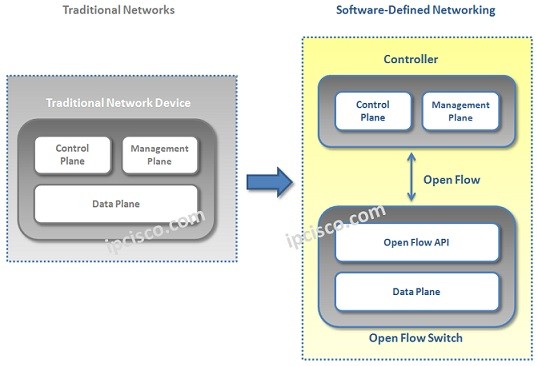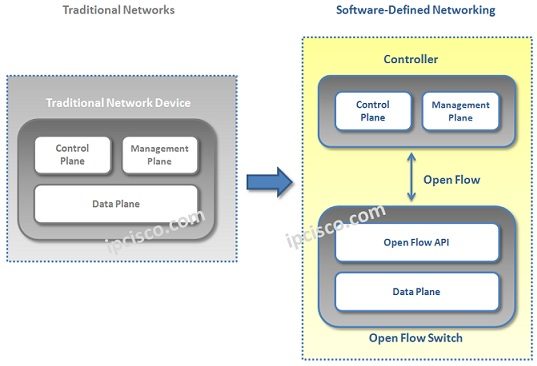- COURSES
- SPECIALS
- BLOG
- MEMBERS
- SHOP
- ABOUT
- ENROLL HERE

In this lessons, we will talk about SDN versus Traditional Networks. We will give the drawbacks of traditional networks and give the benefits coming with SDN.
Till recent years many companies were using Traditional Network Architectures. They are still widely used in the World. But Traditional networks generally has some drawbacks. These drawbacks make them difficult to manage and maintain day by day. To overcome these limitations, SDN (Software-Difined Networking) has developed and at the future, most of the network types will be SDN based.
Table of Contents

Most of the network types of today, is still Traditional Networks. These networks has some limitations and day by day, with the growth of data communication, these limitations are increasing very fast. Let’s check SDN versus Traditional Networks.
First of all, data communication is growing day by day and this growth brings more devices. Whenever a new network device is added to the network, rewiring is required.All of these devices are managed by human. And with growth of the networks, the deviced that need to manage is increasing. It is difficult to manage the these huge network infrastructures anymore.
Secondly, the operational facility increase. With the number of devices, operational costs are increasing too. Till now, switches, routers and other network equipments has configured and operated manually by human. But, it is becoming very difficult to do this anymore. There are many network devices and they are increasing. Manually doing important configurations are also cause human configuration errors.
Thirdly, the important thing is, adaptation to the network changes. In manual control, it is difficult to adapt network changes, because jobs are being done manually. In huge networks, this must be done dynamically. AS an analogy, you can think todays’ system as manual old phone services. At that days, phone connections were done by human manually. If we compare traditional networks with SDN, the situation of Traditional Network is like old phone services.
Leave a Reply